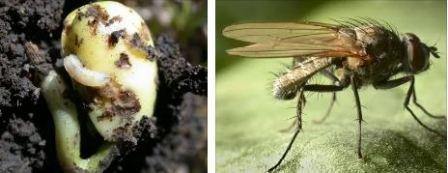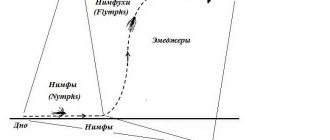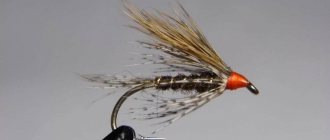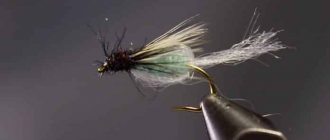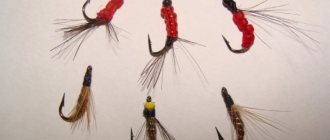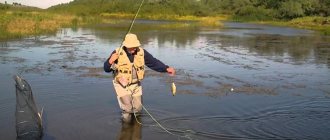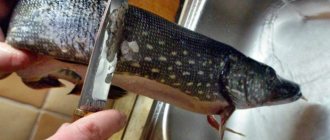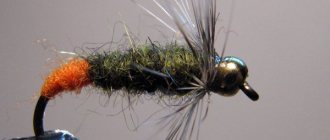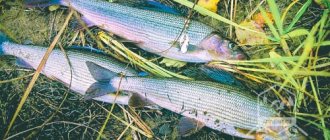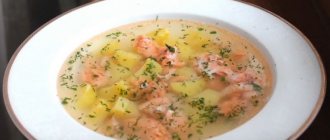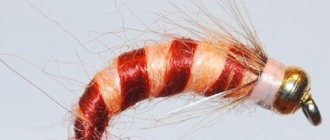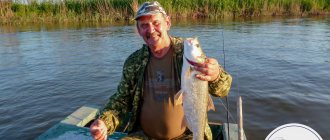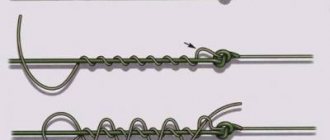Flies - what are they?
Flies, or streamers as they are also called, are artificial bait that is used to catch fish using fly fishing or spinning fishing.
Flies are insect imitators. They can swim both on the surface of the water and in a certain layer of it.
Such baits have the following features:
- they perfectly imitate food, which many predatory fish look for at the very surface of the water;
- such baits, unlike plant and animal baits, can be used repeatedly, and at the same time do not lose any of their attractiveness to fish;
- flies are very easy to store and transport, since they do not require certain temperature conditions;
- flies can be very different, which gives the fisherman the opportunity to use his imagination and do experiments when making them.
You can use flies at any time of the year, but they are considered the most effective in the summer, when there are many live insects and the fish, knowing this, collect them on the water.
According to buoyancy, flies are divided into the following types:
- Flies floating on the surface that do not sink at all. They are commonly used for fly fishing. These flies are made from very light materials: plastic, hair, foam and feathers. Besides. Float flies can be divided into two categories: sliding flies and poppers. Sliding baits glide across the surface of the water as if on ice, and poppers, when in the water, make sounds that are very similar to the noise of crickets.
- Floating flies that sink when pulled through. They also have another name - divers. Fishing with such baits can be done in any body of water at any depth, which makes them very convenient and practical.
- Sinking flies that float in layers of water. They are also often called "swimmers". These baits can come in a variety of sizes, weights and colors, so fishermen can safely use all their imagination when making them.
- Sinking flies that sink very deep into the water. They swim almost at the very bottom of reservoirs, attracting especially large predatory fish.
You can use flies to catch the following types of fish:
- trout;
- asp;
- grayling;
- salmon;
- perch;
- chub;
- ide;
- roach;
- saberfish;
- rudd;
- bleak.
In addition, flies can be classified according to their varieties:
- wet;
- dry;
- nymphs;
- emergers;
- streamers.
- Wet flies are baits that look like a drowned beetle or insect larva. They have a thin body and attached legs and tail, which adds to their natural appearance. Wet flies are commonly used to catch salmon and grayling. They are fished from summer to late autumn.
- Dry flies look like flies or wasps that have fallen onto the surface of the water. They are made from lightweight materials that float well on the water, so such baits can “sit” on the water for a long time and not sink. Dry flies are used to catch chubs, roaches, sabrefish and other types of fish.
- Nymph baits are artificial insects at certain stages of underwater development. Most often they are used for catching perch and trout. To make such a bait, you must strictly follow the recommendations for the required color and size of the fly.
- Emergers are baits that imitate an insect that is just beginning to transform from a larva into an adult.
- Streamers outwardly hunt small fish or large beetles. They are the most difficult to manufacture among all other types of flies. Most often, streamers are used to catch asp.
The best catchable flies for grayling
All kinds of ratings of artificial flies do not give a clear picture of the selection of a universal and catchable bait for most fishing conditions. The fisherman must thoroughly understand the food preferences of the fish at the time of fishing and look in his arsenal of baits for an effective imitation that is most similar in appearance and style of play to the real food object.
Starting from the end of spring, anglers focus on selecting bait similar to the emerging mayfly. Flies with colorful plumage and distinct wings attract most species of peaceful and predatory fish, including grayling, by the nature of the species and their movements. With the onset of summer, graylings are attracted by the nymph, which is fed into the middle water horizons and to the very bottom. With the arrival of autumn, already in sufficiently cooled water, you can confidently begin fishing using the so-called compact and small-sized winter flies, one of the options of which is an imitation of a bunting larva.
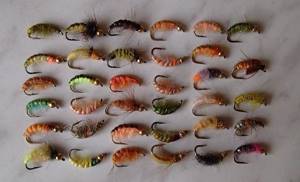
Regarding the versatility of this type of bait, we can highlight a copy of the caddisfly. This larva is distributed everywhere and is quite familiar to fish in all water bodies of the country, which absolutely does not cause any special suspicion in the potential trophy when it is supplied to fishing zones. If you have a great desire to catch a large grayling, experienced fishermen advise attracting luck by fishing for caddis fly pupae, which are larger in volume and are also known to the fish. With such an imitation, you can fish even with an ordinary float rod using ordinary fishing, which is familiar to all anglers.
Do it yourself
To make flies you should use the following tools:
- scissors;
- vice or clamps;
- feather holder;
- needles;
- threads;
- spool holder;
- tweezers;
- brush;
- lapma;
- magnifying glass or magnifying glass;
- mirror;
- mortar.
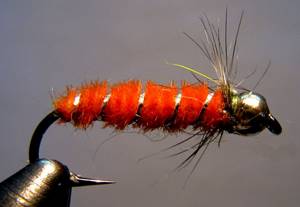
The most commonly used materials for making flies:
- hooks (especially for flies, they are thinner than regular ones);
- feathers (from rooster, goose or duck);
- wool;
- Lurex;
- glue;
- thread for installation (it is better to use silk);
- dabbing.
Most often, flies depict the following insects:
- caterpillars;
- butterfly pupae;
- flies;
- mole;
- wasps;
- gadflies;
- spiders;
- beetles;
- grasshoppers;
- dragonflies;
- ants;
- larvae;
- mayfly
The general principle of making flies looks like this:
- Remove the hook from the spoon and pull a few hairs through the ring.
- Using a cambric, secure the hairs in this position.
- Place the cambric on the hook ring.
- Using a needle, fluff the hairs so that they become more voluminous.
Flies for different fish
To make a fly for perch, you should take the following materials:
- hook number seven;
- one bright feather;
- a small bundle of woolen threads up to four centimeters long;
- nail polish;
- nylon rope.
- Wrap the thread around the hook several times.
- Attach the feather by its tip to the hook using nail polish or regular glue.
- Attach wool threads.
- After the varnish has dried, use a needle to fluff the fly.
- If the threads turn out to be very long, then they need to be trimmed a little with scissors.
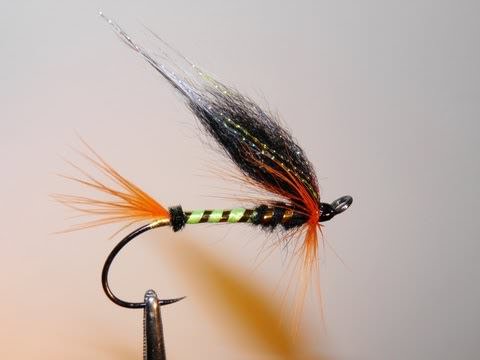
To make a fly or wabik for an asp you will need:
- four thick hairs;
- glue;
- needle;
- hook number four.
1. Wrap the hairs to the shank of the hook closer to the ring. 2. Secure them with glue. 3. Fluff the wabik with a needle.
This bait is very effective for catching asp together with the Sbirulino rig.
Wabik takes no more than four minutes to make, so fishermen can make large quantities of them. In addition, such a front sight lasts a very long time.
To make a pike fly or streamer, you will need:
- weight (weight no more than three grams);
- hook number ten;
- lurex bright;
- multi-colored hairs;
- rooster feather;
- threads;
- glue.
- Tie lurex thread to the hook.
- Glue the rooster feather.
- Using a needle, fluff up the lurex and the bait is ready.
This fly sinks very slowly. Therefore it is ideal for use in grass ponds.
For long casts it can be equipped with a small weight or a special float. A streamer is used to catch pike in the fall.
Making Tips
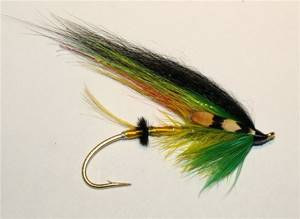
- To make dry types of flies, you need to use stiffer and more elastic feathers.
- To make wet types of flies, you should use soft and fluffy feathers.
- It is best to use the following colors for flies:
- brown;
- red;
- green;
- white;
- yellow;
- brown;
- crimson.
- It is better to use feathers from an old rooster as they are of better quality.
- The best feathers are considered to be narrow feathers that are not fastened together with synchronous edges.
- The size of the flies should be used depending on the type of fish they will be used on. For small fish, the size of the fly should not be more than three centimeters. To catch large fish, the size of the fly can reach six centimeters.
Fly fishing tackle for trout
A rod for trout fishing can be chosen from a fairly wide range - 3-6 classes, provided that you catch small and medium-sized fish. When fishing for large trout, of course, it is better to choose a fly rod of a higher class. Naturally, we select the cord for the class of the rod. It is better to use a leash with a diameter of 0.15 mm, but if, again, you come across a large trout, then you can use a stronger leash with a diameter of 0.25 mm. The leash should be equal to the length of the rod, which is usually selected for trout within 1.7-3 meters. The length of the rod depends on the fishing conditions and your preferences. For example, when fishing for trout on a platform, a three-meter rod will not cause any inconvenience, and may have a lot of advantages, but when fishing for brook trout on a river, sometimes you have to cover considerable distances along the shore. Often these distances are not without obstacles, through which it will be very problematic to get through with a long rod.
Features of making flies
Making flies has the following features:
- When making flies, you should avoid large knots or make them as invisible as possible so that the fish cannot see them.
- If you are making a fly with legs, then they need to be placed at the same level so that they are as similar as possible to real insect legs.
- Already made flies need to be washed in water with added soap. This will remove the glue smell.
- It is better to use thread in dark shades so that when wet it does not show through and does not create the impression of an empty, inanimate insect that the fish will not peck at.
- During the warm fishing season, it is better to use bright colors of flies that will attract fish from afar.
How to catch grayling with a fly
Ensuring realistic play and behavior of the bait becomes the main factor in successful fishing for sharp and cunning grayling. It would seem that when using even the most catchy flies, which constantly bring other types of fish into the test lists, in order to avoid failures in grayling hunting, you need to comply with a number of specific requirements for fishing techniques. So, feeding baits should be carried out at medium and long distances, because due to the caution of the fish, catching it at the feet will be, although pleasant, but a rare exception. After the simulator splashes down, its movements should not be constrained by the fishing line, allowing it to swim freely in the direction and force of the current.
Important! The fisherman must take any tension in the cord and visually marked unnatural movements of the nozzle as a signal to hook.
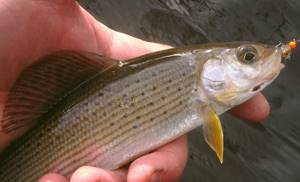
In addition, the fisherman must be prepared for strong resistance from hooked fish, regardless of the size of the grayling, which is rightfully considered one of the fiercest fighters. This is especially pronounced when fishing for grayling in the fall using flies, when the fish are in the highest strength condition. They don’t force the fishing, trying to tire the fish by constantly holding it on a tight cord and pick it up in the landing net when it has already calmed down. The general advice would be to start fishing in an unfamiliar body of water, using as bait flies that imitate a caddisfly in their appearance.
Blitz tips
- When making flies, care should be taken to ensure good lighting so that you can see everything clearly and avoid mistakes.
- When making flies there is no need to be afraid of using very small hooks as they are also effective.
- All excess or too long materials must be removed with scissors, otherwise the fly will not “sit” well on the water.
- The turns of thread should be done as little as possible.
- The thread must be pulled very tightly, otherwise the entire design of the fly will be unreliable.
Sprout fly
The insect is 3-5 mm long, gray in color with three brown stripes on the back and longitudinal on the abdomen. Females lay eggs in the soil in the spring, from which yellowish larvae emerge, which after two weeks go into the soil to pupate.
The larvae feed on swollen or sprouted seeds of pumpkins, cucumbers, melons and others. If they penetrate the young stem, the plant dies.
To prevent the spread and infection of the sprout fly, you need to dig up the areas, apply high-quality fertilizers in a timely manner, remove plant debris and promote the appearance of friendly entrances of pumpkin crops.
